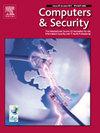CDDA-MD:基于概念漂移检测和适应技术的高效恶意流量检测方法
IF 4.8
2区 计算机科学
Q1 COMPUTER SCIENCE, INFORMATION SYSTEMS
引用次数: 0
摘要
随着网络环境的快速发展,网络攻击已成为网络安全的主要威胁之一,维护网络安全需要准确检测网络攻击产生的恶意流量。然而,由于网络行为的动态性,网络流量中的数据分布会随着时间的推移而发生变化,即出现概念漂移现象,概念漂移的出现导致现有的恶意流量检测模型存在检测效率下降的问题。针对这一难题,我们提出了一种基于概念漂移检测和自适应的恶意流量检测方法--CDDA-MD。首先,利用滑动窗口技术对网络流量进行分割,并在每个窗口的基础上对数据样本进行分析。然后,利用长短期记忆网络(LSTM)捕捉网络流量时间序列特征中的长期依赖关系;同时,引入多头自注意机制,为重要特征提供更大的权重。此外,我们还用 Tanh 代替了 LSTM 中的 ReLU 激活函数,以克服神经元 "死亡 "问题;用 Nadam 代替了 Adam 优化器,以加快收敛速度,从而提高了检测性能。接下来,基于错误率的思想检测概念漂移,并利用检测到的概念漂移数据进行增量学习,使模型适应当前的网络环境。最后,根据检测到的概念漂移进行恶意流量检测操作,以有效维护网络空间的安全。对四种网络流量的实验表明,与现有的先进方法相比,所提出的 CDDA-MD 方法在 F1 测量上分别提高了 0.3%、1.2%、1.16% 和 1.9%,在 TPR 上分别提高了 0.25%、1.1%、1.44% 和 1.72%,而且具有更好的稳定性。本文章由计算机程序翻译,如有差异,请以英文原文为准。
CDDA-MD: An efficient malicious traffic detection method based on concept drift detection and adaptation technique
With the rapid development of network environment, cyber attacks have become one of the major threats to network security, and maintaining network security requires accurate detection of malicious traffic generated by cyber attacks. However, due to the dynamic nature of network behavior, data distribution in network traffic may change over time, i.e., appearing concept drift phenomenon, and the emergence of concept drift causes existing malicious traffic detection models to suffer from the problem of decreased detection efficiency. To address this challenge, we propose a Concept Drift Detection and Adaptation-based Malicious traffic Detection method called CDDA-MD. Firstly, the network traffic is segmented using sliding window technique and the data samples are analyzed on the basis of each window. And then, a long short-term memory network (LSTM) is utilized to capture the long-term dependencies in the time-series features of network traffic; At the same time, a multi-head self-attention mechanism is introduced to provide larger weights for the important features. Moreover, we replace the ReLU activation function in LSTM with Tanh to overcome the neuron “death” problem, and replace the Adam optimizer with Nadam to accelerate convergence, thereby improving the detection performance. Next, the concept drift is detected based on the idea of error rate, and the detected concept drift data is used for incremental learning to make the model adapt to current network environment. Finally, based on the detected concept drift, malicious traffic detection operations are performed to effectively maintain the security of cyberspace. Experiments on four network traffic show that compared with existing state-of-the-art methods, the proposed CDDA-MD method improves 0.3%, 1.2% , 1.16% and 1.9% in F1-measure, 0.25%, 1.1%, 1.44% and 1.72% in TPR, respectively; It also has better stability.
求助全文
通过发布文献求助,成功后即可免费获取论文全文。
去求助
来源期刊

Computers & Security
工程技术-计算机:信息系统
CiteScore
12.40
自引率
7.10%
发文量
365
审稿时长
10.7 months
期刊介绍:
Computers & Security is the most respected technical journal in the IT security field. With its high-profile editorial board and informative regular features and columns, the journal is essential reading for IT security professionals around the world.
Computers & Security provides you with a unique blend of leading edge research and sound practical management advice. It is aimed at the professional involved with computer security, audit, control and data integrity in all sectors - industry, commerce and academia. Recognized worldwide as THE primary source of reference for applied research and technical expertise it is your first step to fully secure systems.
 求助内容:
求助内容: 应助结果提醒方式:
应助结果提醒方式:


